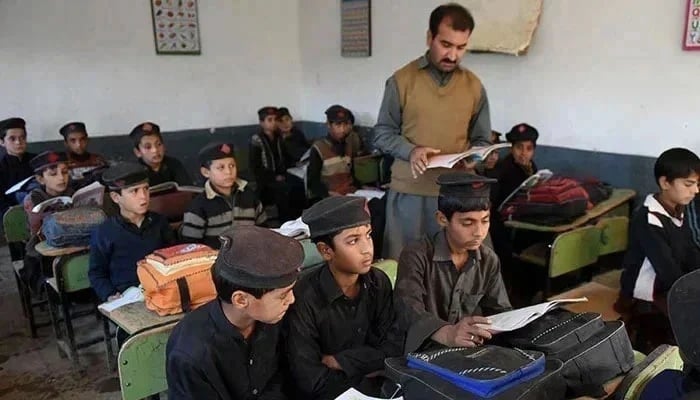
- KP government promises action in upcoming budget.
- Peshawar schools show severe infrastructure gaps.
- Educational emergency planned in worst-hit districts.
Thousands of children studying in over 10,000 government schools across 28 settled districts of Khyber Pakhtunkhwa continue to be deprived of essential facilities such as boundary walls, electricity, washrooms, and clean drinking water, according to a report by the provincial Education Department.
The data reveals significant infrastructure deficiencies in the province’s public education sector. More than 5,000 schools are without electricity, over 2,000 have no provision for clean drinking water, and a similar number lack proper washroom facilities and boundary walls.
The report states that 2,211 primary schools do not have electricity, with the highest numbers recorded in Mansehra (344) and Upper Kohistan (252). In Upper Kohistan, 208 schools are without clean drinking water, and 1,253 primary schools lack washroom facilities.
Of the 160 middle schools in the province, 136 are without boundary walls, 71 lack clean drinking water, and 57 have no washrooms. In the provincial capital Peshawar, 21 schools are without electricity, 15 lack clean drinking water, 17 have no washrooms, and 8 are without boundary walls.
Khyber Pakhtunkhwa’s Information Advisor Barrister Muhammad Ali Saif, said the provincial government was making efforts to address the lack of basic amenities in government schools. He noted that education remained a top priority, and that Chief Minister Ali Amin Gandapur had taken notice of the issue and issued directives accordingly.
He added that more resources would be allocated in the next budget to ensure that no government school remained without washroom and drinking water facilities.
Saif also mentioned that districts with over 50% out-of-school children would see an educational emergency declared. In areas with an urgent need for school facilities, the government intended to establish schools in rented buildings to bridge the gap.
These efforts come against the backdrop of alarming figures recently released by the provincial education department, which show that 37% of children in KP remain out of school.
The earlier report paints a concerning picture, revealing that 4.92 million boys and girls across the province are currently deprived of formal education.
The problem is most acute in Kolai-Palas Kohistan, where 80,333 children are out of school. The neighbouring districts of Lower and Upper Kohistan also record alarmingly high rates, with 79% of children not enrolled in any educational institution.
In contrast, Upper Chitral emerges as the province’s best-performing district, with only 10% of children out of school.
The provincial capital, Peshawar, has more than 500,000 out-of-school children, including 319,000 girls, underscoring a major gender gap in education access.



